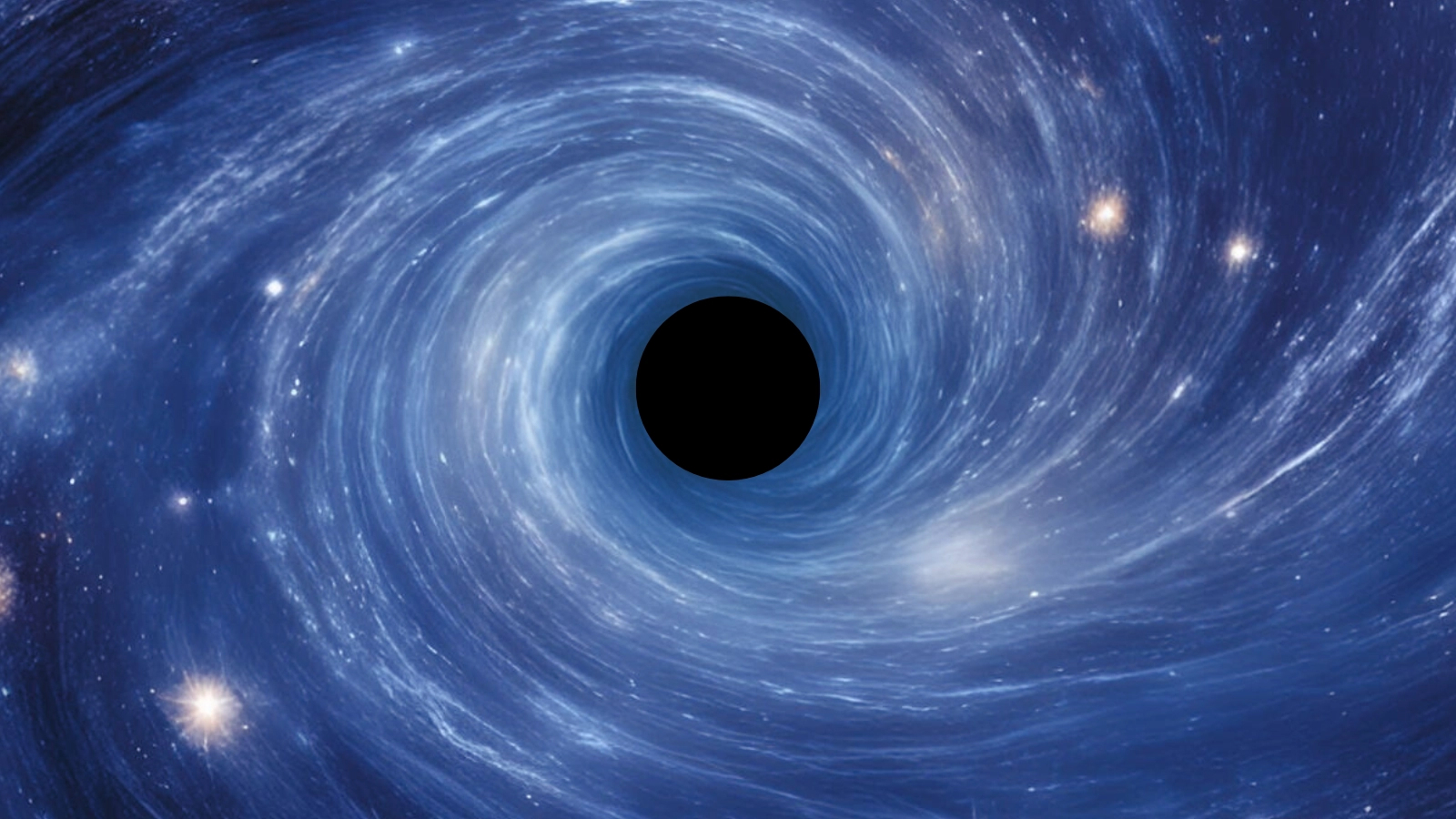When you purchase through connexion on our site , we may earn an affiliate commission . Here ’s how it works .
The early population contained far fewer miniatureblack holesthan previously thought , making the origins of our cosmos ’s missing matter an even cracking mystery story , a raw study has suggested .
Miniature , or primordial , black hole ( PBHs ) are black holes thought to have formed in the first fractions of a 2d after the Big Bang . According to leading theories , these dime - sized singularity popped into existence from rapidly collapsing regions of thickheaded , hot gas .

An artist’s concept of a black hole.
The pocket of infinitely dense space - time are how many physicist explain the universe ’s dark matter , a mysterious entity that , despite being completely unseeable , make the population much heavy than can be explain by the matter we see .
But even though the conjecture is democratic , it has one big job : we ’ve yet to directly note any primordial mordant hole . Now , a new report has offered a possible explanation as to why they did n’t take shape , throwing heart-to-heart cosmology ’s dark issue problem to wider speculation .
consort to the research , the mod macrocosm could have taken form with far fewer primal black holes than previous models estimate . The researcher publish their finding May 29 in the journalPhysical Review Letters .

The cosmic microwave background: The universe’s ‘baby picture’ taken by the European Space Agency’s Planck satellite
Related:1st detection of ' hiccup ' black hole leads to surprising discovery of 2nd black hole orbiting around it
" Many research worker feel they [ primordial black holes ] are a strong candidate for dark matter , but there would call for to be plenty of them to satisfy that theory , " lead authorJason Kristiano , a alumna pupil in theoretical physics at the University of Tokyo , said in a program line . " They are interesting for other reasons too , as since the recent innovation of gravitative wafture uranology , there have been breakthrough of binary fatal hole mergers , which can be explained if PBHs exist in large numbers . But despite these strong reasons for their expected abundance , we have not seen any directly , and now we have a model which should explain why this is the case . "
A hole in the picture
The universe begin 13.8 billion year ago with theBig Bang , induce the young cosmos to burst outwards due to an invisible force sleep with asdark energy .
As the universe grew , ordinary matter , which interacts with igniter , congealed around thud of invisibledark matterto make the first galaxies , connect together by a vast cosmic web . Nowadays , cosmologist recall that ordinary matter , dark issue and dark vigour make up about 5 % , 25 % and 70 % of the universe ’s theme , respectively .
Initially , the universe was opaque , a plasma broth that no luminousness could sweep without being ensnare by electromagnetic fields produced by prompt charges . Yet after 380,000 years of temperature reduction and elaboration , the plasm eventually recombined into neutral topic , giving off microwave oven atmospherics that became the universe ’s first sparkle , the cosmic microwave oven setting ( CMB ) .

Cosmologists have been searching for these early black holes by studying this firstbaby word-painting of the cosmos . Yet , so far , none have been establish .
Some physicist think there ’s a possibility they have n’t discovered the Brobdingnagian number of primordial pitch-dark holes necessary to describe for non-white matter just because they ’ve yet to learn how to detect them .
But by applying a manakin build on an advanced form ofquantum mechanicscalled quantum field possibility to the job , the researchers behind the new study make it at a dissimilar conclusion — we ca n’t find any primordial contraband holes because most of them simply are n’t there .

— scientist reveal largest mathematical function of the creation ’s active supermassive black holes ever created
— Universe ’s oldest 10 - beam - spit quasar could reveal how the biggest black holes were bear
— deep ' ancient heart ' of the Milky Way discovered using Gaia investigation

Primordial black pickle are believed to have emerged from the collapse of curt but strong gravitative wave rippling across the universe of discourse . By applying their modelling to these waves , the researchers discover that it could take much less of these waves to combine than other theories estimate for shape heavy structures across the universe . And the few the waves necessary to play the picture , the few primordial black holes .
" It is wide trust that the crash of short but solid wavelengths in the early universe is what produce primordial black holes , " said Kristiano . " Our study suggests there should be far few PBHs than would be take if they are indeed a strong candidate for benighted issue or gravitational undulation events . "
To confirm their possibility , the researcher will look to future , hyper - sensible gravitational wave detectors such as theLaser Interferometer Space Antenna ( LISA ) project , which is due to be sent into quad on an Ariane 3 skyrocket in 2035 .














